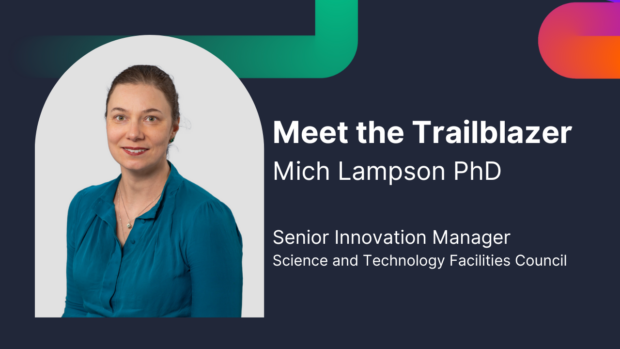
by Mich Lampson
Tell us about a Knowledge Asset innovative project you’re proud of and why?
I have been fortunate to work with many Knowledge Assets, but the Broadband Spectrometer invented by my colleague at the Space department in Rutherford Appleton Laboratory stands out. This department frequently engages in spectroscopy, a technique used to study and analyse the properties of light and how it interacts with matter.
Their activities range from research to in-situ sensing. One of our scientists modified a standard broadband static FT spectrometer, reducing light losses and extending its spectral range, effectively combining the functionality of two spectrometers.
This one has been scientifically interesting and yet commercially complex, as it gives the market a solution that requires end users to think in different ways, allowing people to do new things and challenging the status quo.
At what point and why did you realise you wanted to take this project forward?
I was interested in this project from my very first meeting with the inventor. At that stage, the idea was still in their head, with no verification, and indeed there was doubt about its feasibility.
What had caught my attention was its potential. It’s a simple idea at its core and yet it did not exist in the scientific literature. This piqued my curiosity as to whether it would work and, if not, why not – as there was no obvious answer to this question.
Being a modification to a popular spectroscopy technique, we could see there being a broad market where the instrument could be applied. This gave us the confidence to start exploring the technical side.
How has the support from GOTT made a difference to your project?
Although we were able to create a demonstrator product on an optical bench, we couldn't make the required modifications to meet commercial needs without GOTT's grant funding.
We were fortunate to receive GOTT’s Knowledge Asset Grant funding which allowed much greater progress to be made in the development of the instrument. We’ve also received support from GOTT in the form of a market study. GOTT commissioned a specialist market research company to investigate the potential market, helping us to understand potential licensees and how our invention would be perceived by them. This shaped our commercialisation strategy.
What’s been the biggest challenge to date?
Our biggest challenge with the project has been identifying the potential market for the invention. This is due to the instrument’s application in so many different areas – from pharmaceuticals to food and beverage, agriculture, environmental analysis, polymer analysis and beyond. Each industry has its own challenges, standards and regulations.
Understanding this vast landscape, the benefits our technology brings to each sector and where to initially target has been a complex undertaking. With existing products already embedded in the markets, we are looking for where there is market pull and interested end users. We need to understand how our technology complements what is already out there and where it can make the biggest difference.
What one piece of advice would you give to budding trailblazers in the public sector?
Talk to others in the Knowledge Asset space. A great place to start is with GOTT’s Knowledge Assets Network which brings together those working in this space from across government departments, PSREs and beyond with a wide variety of experience, skills and areas of expertise.
Although we work in different organisations, with different priorities, we face similar challenges and concerns. Each Knowledge Asset is often unique with this own challenges.
Drawing on the experience of others can bring a fresh perspective, allowing you to avoid pitfalls and inject some creative thinking. The path to the desired outcome is rarely smooth, but leveraging a wealth of experience can help find a way through.
What’s the best part of your job?
The best part of my job is being able to see all the science and research happening at STFC. I love the variety, innovation and energy that is here. We’ve got such a broad range of ideas and interests from space to quantum computing, from building the world’s most powerful laser to using neutrons to see through materials. I am very fortunate to work across every department, engaging with scientists and engineers at all levels, discussing new ideas to supporting those that are being licenced or spun out.
Leave a comment